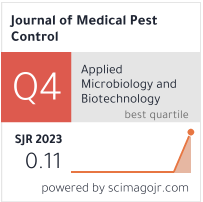The role of monoamine oxidase A in neurobiology of aggressive and violent behavior in men
Abstract
Over the past two decades, converging evidence has underscored the substantial contribution of genetic determinants to the predisposition toward aggressive, antisocial, and violent behaviors. Among the genetic factors investigated, the monoamine oxidase A (MAOA) gene has emerged as the most extensively characterized locus. MAOA encodes a critical enzyme involved in the catabolism of catecholamines and serotonin, neurotransmitters that play central roles in modulating affective and behavioral regulation. Polymorphic variants associated with reduced enzymatic activity—particularly those transmitted maternally—have been consistently implicated in heightened vulnerability to aggression and antisocial behavior (ASB), with the effect most pronounced among males exposed to childhood maltreatment.
The interaction between low-activity MAOA alleles and adverse early-life environments constitutes one of the most robustly documented gene–environment (G×E) associations in the psychopathology of aggression and ASB. Neurobiological investigations further demonstrate that reduced central MAOA activity correlates with an elevated propensity toward violent behavior. Moreover, prenatal exposure to tobacco smoke has been postulated to exacerbate this vulnerability, potentially through the suppression of MAOA expression, thereby representing an additional mechanistic pathway linking environmental insults with behavioral outcomes.
In parallel, preclinical studies employing murine models of MAOA deficiency and G×E interactions have yielded critical insights into the molecular, neurochemical, and behavioral phenotypes associated with impaired MAOA function. These models not only corroborate clinical findings but also provide an experimental framework for disentangling the neurobiological mechanisms underlying antisocial and aggressive behaviors.
The objective of this article is to deliver a comprehensive and critical appraisal of the current state of evidence regarding the role of MAOA in the emergence of aggression, integrating findings from both preclinical and clinical domains to advance understanding of this complex gene–behavior relationship.
Keywords: monoamine oxidase; neurobiology; violent behavior;
Full text:
PDFReferences
Sherzad Hassan Radha1,*, Fakhir Najim K. Sabir2



